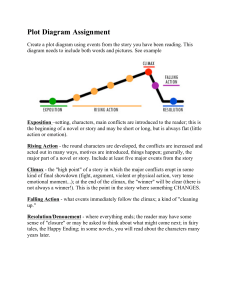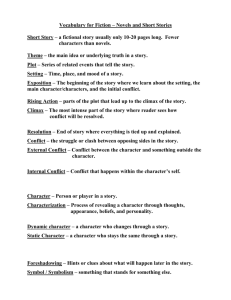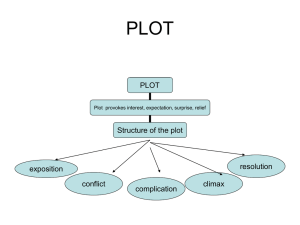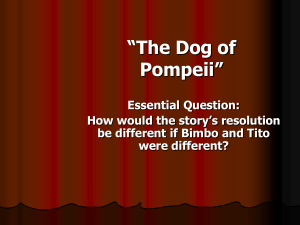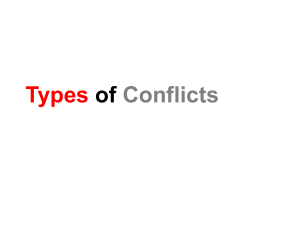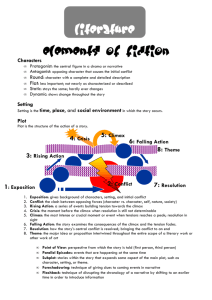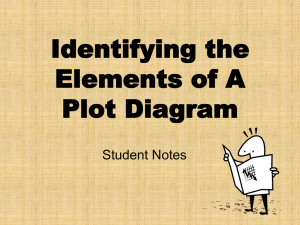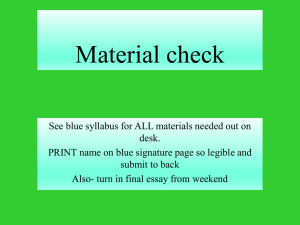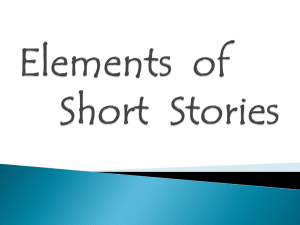Plot is the chain of related events that tells you what happens in a story
advertisement
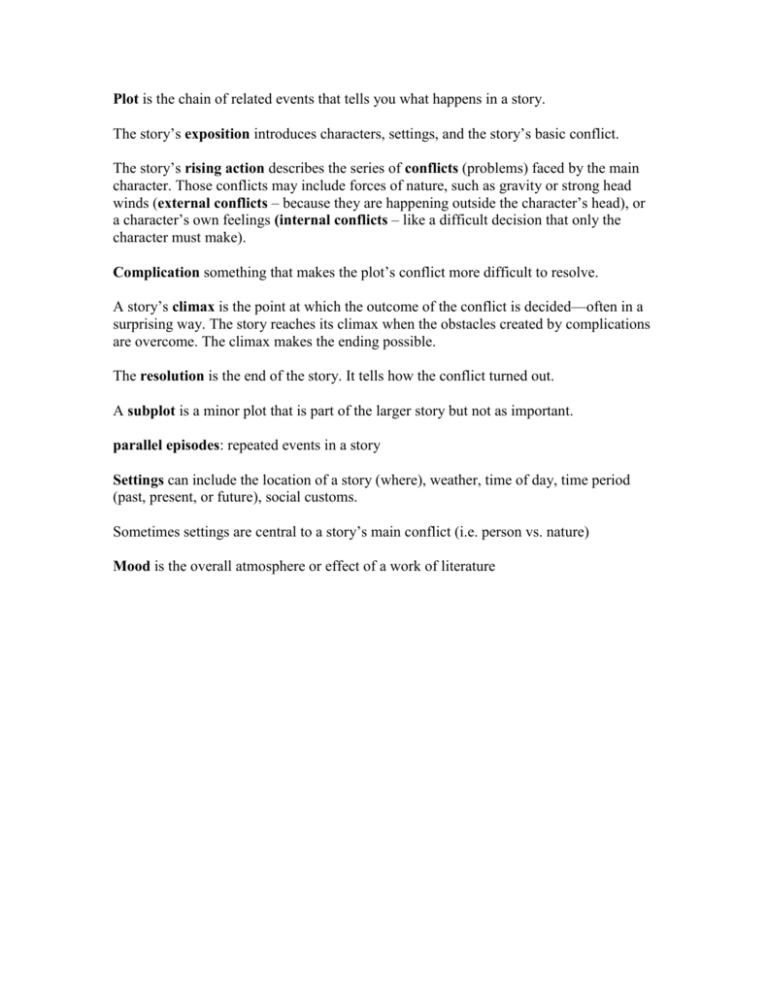
Plot is the chain of related events that tells you what happens in a story. The story’s exposition introduces characters, settings, and the story’s basic conflict. The story’s rising action describes the series of conflicts (problems) faced by the main character. Those conflicts may include forces of nature, such as gravity or strong head winds (external conflicts – because they are happening outside the character’s head), or a character’s own feelings (internal conflicts – like a difficult decision that only the character must make). Complication something that makes the plot’s conflict more difficult to resolve. A story’s climax is the point at which the outcome of the conflict is decided—often in a surprising way. The story reaches its climax when the obstacles created by complications are overcome. The climax makes the ending possible. The resolution is the end of the story. It tells how the conflict turned out. A subplot is a minor plot that is part of the larger story but not as important. parallel episodes: repeated events in a story Settings can include the location of a story (where), weather, time of day, time period (past, present, or future), social customs. Sometimes settings are central to a story’s main conflict (i.e. person vs. nature) Mood is the overall atmosphere or effect of a work of literature

